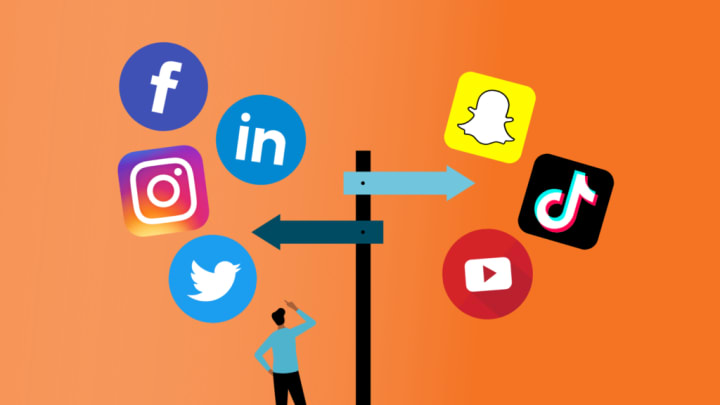Complete Guide to Building a Winning Marketing Strategy
Digital Marketing Guide

Digital marketing has become a crucial part of businesses in the current era. It helps businesses reach a wider audience and achieve their marketing goals efficiently. However, digital marketing is a vast field that involves various techniques and strategies, making it confusing for businesses to figure out where to begin. In this article, we will provide a complete digital marketing guide that will help businesses understand the various components of digital marketing and how to use them effectively.
Search Engine Optimization (SEO)

Search Engine Optimization (SEO) is a technique used to optimize websites and content to rank higher in search engine results pages (SERPs). It involves various on-page and off-page optimization techniques to ensure that websites and content are optimized for relevant keywords. Here are some of the key components of SEO:
Keyword Research: Keyword research is the process of identifying relevant keywords that your target audience is searching for on search engines. It is essential to identify the right keywords to optimize your content effectively.
On-page Optimization: On-page optimization involves optimizing your website's content, structure, and HTML code to make it easier for search engines to understand your website's content and relevance to users. It includes optimizing titles, headings, meta descriptions, images, and internal linking.
Off-page Optimization: Off-page optimization involves building backlinks to your website from other high-authority websites. Backlinks are a critical factor in determining the authority and relevance of your website in search engines.
Content Marketing

Content marketing involves creating and distributing valuable, relevant, and consistent content to attract and retain a clearly defined audience and, ultimately, to drive profitable customer action. Here are some of the key components of content marketing:
Content Creation: Content creation involves creating valuable, relevant, and engaging content that resonates with your target audience. It includes blog posts, infographics, videos, social media posts, and other forms of content.
Content Distribution: Content distribution involves promoting your content to reach a wider audience. It includes email marketing, social media marketing, influencer marketing, and other forms of distribution.
Content Optimization: Content optimization involves optimizing your content for search engines and users. It includes optimizing titles, headings, meta descriptions, images, and internal linking.
Pay-Per-Click (PPC) Advertising

Pay-per-click (PPC) advertising is a form of online advertising where advertisers pay each time a user clicks on their ad. It involves creating ads and bidding on keywords to display your ads to users searching for those keywords. Here are some of the key components of PPC advertising:
Keyword Research: Keyword research is the process of identifying relevant keywords that your target audience is searching for on search engines. It is essential to identify the right keywords to bid on effectively.
Ad Creation: Ad creation involves creating ads that resonate with your target audience and drive clicks to your website. It includes creating headlines, ad copy, and choosing images.
Bidding: Bidding involves setting a maximum bid for each keyword you want to target. Your ad will be displayed to users searching for those keywords, and you will pay each time a user clicks on your ad.
Social Media Marketing (SMM)

Social media marketing (SMM) has become a crucial part of digital marketing as it allows businesses to reach a wider audience and engage with their customers. It involves using social media platforms to promote your brand, products, or services. Here are some of the key components of SMM:
Platform Selection: Platform selection involves identifying the social media platforms where your target audience is active. It includes platforms like Facebook, Instagram, Twitter, LinkedIn, and TikTok. Each platform has its own unique audience and features, so it's essential to choose the platforms that are most relevant to your business and target audience.
Content Creation: Content creation involves creating valuable, relevant, and engaging content that resonates with your target audience. It includes social media posts, stories, videos, and other forms of content. It's important to create content that aligns with your brand and messaging while also being tailored to the specific platform and audience.
Engagement: Engagement involves interacting with your audience by responding to comments, messages, and mentions. It helps build a community and strengthens customer relationships. Responding to customer inquiries and feedback in a timely manner is essential to building trust and loyalty.
Influencer Marketing: Influencer marketing involves partnering with social media influencers to promote your brand or product to their followers. Influencers have a dedicated following and can help businesses reach a wider audience and build brand awareness. It's important to choose influencers that align with your brand and target audience.
Social Media Advertising: Social media advertising involves running ads on social media platforms to reach a wider audience and drive conversions. It includes creating ad campaigns, targeting specific audiences, and monitoring ad performance. Social media advertising can be an effective way to reach a highly targeted audience and drive sales.
Email Marketing

Email marketing involves sending commercial messages to a group of people via email. It can be used to promote your brand, products, or services, as well as to nurture customer relationships and drive conversions. Here are some of the key components of email marketing:
Email List Building: Email list building involves collecting email addresses from your customers and prospects. It includes tactics like website opt-ins, social media promotions, and events.
Email Content Creation: Email content creation involves creating valuable, relevant, and engaging content that resonates with your target audience. It includes newsletters, promotional emails, and transactional emails.
Email Automation: Email automation involves setting up automated email campaigns that are triggered based on user behavior or actions. It can be used to nurture customer relationships and drive conversions.
Analytics and Reporting

Analytics and reporting are essential components of digital marketing as they allow businesses to measure the success of their campaigns and make data-driven decisions. Here are some of the key components of analytics and reporting:
Data Collection: Data collection involves collecting data from various sources, including website analytics, social media analytics, and email marketing analytics. It's important to collect and analyze data regularly to make informed decisions about your marketing campaigns.
Reporting: Reporting involves presenting data in a clear and meaningful way. It includes creating dashboards, charts, and graphs that help businesses understand their marketing performance.
Testing and Optimization

Testing and optimization involve testing different elements of your marketing campaigns to identify what works best and optimize your campaigns accordingly. Here are some of the key components of testing and optimization:
A/B Testing: A/B testing involves testing two different versions of a marketing element to determine which performs better. It can be used to test elements like email subject lines, ad copy, and landing pages.
Optimization: Optimization involves making data-driven decisions to improve the performance of your marketing campaigns. It includes making changes to elements like ad copy, landing pages, and email content to improve conversion rates.
Conclusion
In conclusion, digital marketing is a critical component of any successful marketing strategy. By leveraging the power of various digital channels, businesses can reach and engage with their target audience, build brand awareness, drive conversions, and ultimately grow their business. To create a successful digital marketing strategy, it's important to understand the key components of digital marketing, including search engine optimization, pay-per-click advertising, social media marketing, email marketing, analytics and reporting, and testing and optimization. By implementing these strategies and continually measuring and adjusting your approach based on data-driven insights, you can build a strong digital presence that helps you achieve your business goals. Remember, digital marketing is an ever-changing landscape, so it's essential to stay up to date with the latest trends and technologies to stay ahead of the competition. With a solid understanding of digital marketing and a willingness to adapt, you can build a successful and sustainable marketing strategy that drives results for your business.






Comments (1)
Informational Content